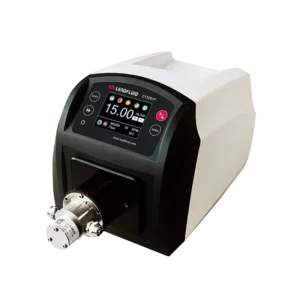In the realm of scientific research, precision and accuracy are paramount, especially when it comes to fluid handling in laboratories. Researchers and scientists often rely on advanced pumping technologies to ensure the precise transfer of liquids for various applications. In this article, we will delve into the world of laboratory pumps, with a particular focus on two cutting-edge technologies: micro peristaltic pumps and precision gear pumps.

Laboratory Pump Overview
Laboratory pumps are crucial tools in research and analytical laboratories, facilitating the controlled and accurate transfer of liquids. These pumps come in various types, each designed for specific applications, ranging from simple liquid transfers to more complex processes like chromatography and sample preparation.
Micro Peristaltic Pumps: Precision in Miniature for Lab-scale Fluid Handling
Micro peristaltic pumps have gained popularity for their ability to provide precise fluid control in laboratory settings. The fundamental principle behind peristaltic pumping involves the use of a flexible tube or hose, which is compressed and then released in a pulsatile manner to move liquids. This technology offers several advantages, including:
- Contamination-Free Fluid Transfer: As the fluid only comes into contact with the tubing, micro peristaltic pumps prevent contamination of the pump components and facilitate easy cleaning and sterilization.
- Precision and Accuracy: Micro peristaltic pumps offer high precision and accuracy in dispensing liquids, making them suitable for applications where minute volumes need to be transferred.
- Versatility: These pumps can handle a wide range of viscosities, from thin solvents to viscous fluids, making them versatile for various laboratory tasks.
Precision Gear Pumps: Engineering Excellence for Accurate and Versatile Fluid Transfer
Precision gear pumps are another class of laboratory pumps that operate based on the movement of gears within a pump chamber. These pumps are known for their accuracy, reliability, and ability to handle both low and high-viscosity liquids. Key features of precision gear pumps include:
- High Accuracy: The design of precision gear pumps ensures a consistent and accurate flow rate, making them ideal for applications where precise dosing is critical.
- Broad Application Range: Precision gear pumps can handle a diverse range of fluids, including corrosive and abrasive substances, making them suitable for various laboratory tasks.
- Low Pulse Flow: These pumps exhibit low pulsation, resulting in a steady and continuous flow of liquid, which is advantageous in applications requiring smooth fluid transfer.
Comparative Analysis:
When choosing between micro peristaltic pumps and precision gear pumps, researchers should consider the specific requirements of their applications. While both technologies offer high precision, each has its unique strengths and weaknesses.
- Micro Peristaltic Pumps vs. Precision Gear Pumps:
Micro peristaltic pumps are well-suited for applications where contamination is a concern, and easy maintenance and cleaning are crucial.
Precision gear pumps excel in tasks demanding high accuracy, low pulsation, and the ability to handle a broad range of fluid viscosities.
- Factors to Consider:
Nature of the fluid being pumped (viscosity, corrosiveness, etc.).
Required flow rates and dosing precision.
Ease of maintenance and cleaning.
In the ever-evolving landscape of laboratory equipment, the choice between micro peristaltic pumps and precision gear pumps depends on the specific needs of the research or analytical task at hand. Both technologies play a crucial role in advancing scientific discoveries by ensuring the accurate and controlled handling of fluids in laboratory settings. As technology continues to advance, researchers can look forward to even more sophisticated and specialized laboratory pump solutions that cater to their diverse needs.